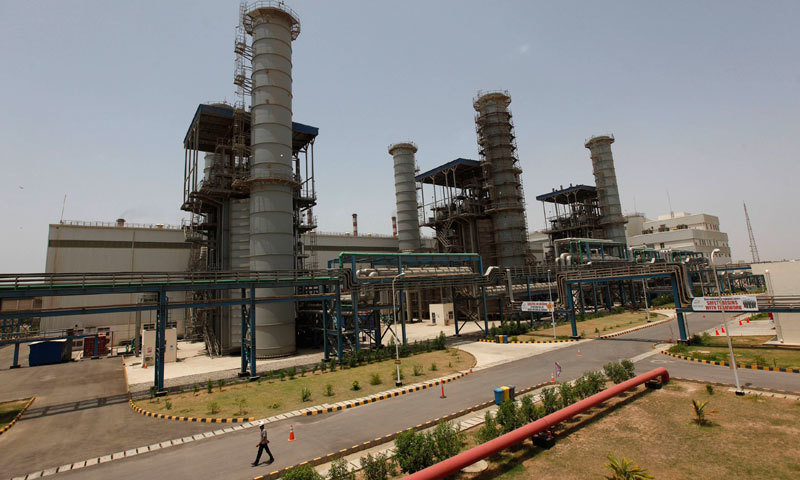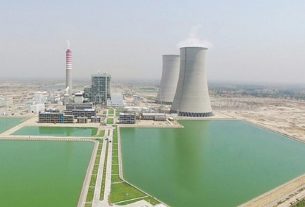ISLAMABAD: Singapore-based firm Trafigura on Thursday signed an agreement with Universal Gas Distribution Company (UGDC) for utilisation of its surplus capacity at the Pakistan Gas Port Limited (PGPL) terminal for supply of liquefied natural gas (LNG) to the transport sector.
Trafigura, a commodity multinational, had five per cent equity participation in the terminal and acquired surplus re-gasification capacity of 150 million LNG at the PGPL terminal about two years ago. The government through its subsidiary Pakistan LNG Terminal Limited (PLTL) had booked a maximum of 600mmcfd (million cubic feet per day) processing capacity of the PGPL terminal.
Last week, ExxonMobil, the world’s largest publicly traded oil and gas firm, had signed an agreement with UGDC to supply LNG to the country’s transport sector. The LNG imported by ExxonMobil would now be stored and re-gasified at the PGPL terminal before flowing into the gas network under the country’s third party access (TPA) rules.
Trafigura and UGDC had reached an understanding on the cooperation agreement last year but could not actualise it for want of an LNG supply and import arrangement. With ExxonMobil’s commitment to supplying at least four LNG shipments a year, the two firms have now formalised the agreement for supply of 50-80mmcfd.
Singapore-based firm will use its surplus capacity at PGPL terminal for the purpose
“Trafigura has a long-standing presence in Pakistan and it owns the excess capacity, which is the capacity not contracted by PLTL, in the terminal of Pakistan Gas Port Consortium Limited (PGPC). Trafigura will use some of capacity to import LNG and sell gas to UGDC,” said a statement issued by UGDC.
The agreement was signed by UGDC Chief Executive Officer Ghiyas Abdullah Paracha and Fadi Mitri, Business Development and Origination, LNG and Gas, Trafigura. The officials of both companies and BW LNG Managing Director Yngvil Eriksson Asheim, whose company had provided the Floating Storage and Re-gasification Unit (FSRU) to the PGPL, were present.
Trafigura had been looking for private LNG customers to utilise its capacity for quite some time. UGDC and Trafigura have now formally entered into an agreement for a minimum supply of 50mmcfd of LNG on a “take or pay” basis.
Mr Paracha said the CNG (compressed natural gas) sector in Punjab was currently utilising about 65mmcfd of LNG and anticipated an increase in requirement to 80mmcfd in three to six months as supplies became predictable and touched 100mmcfd in about a year.
He said UGDC had now completed the supply chain for predictable LNG supplies to CNG stations and formally requested the petroleum division on Thursday to forward recent decisions of the federal cabinet to Sui gas companies for formal implementation of the TPA rules. He said the CNG sector had been a long-standing consumer of the gas network and also won the additional capacity allocations through a first come, first served basis.
Mr Paracha said the petroleum division was happy to note the LNG import and processing arrangements by UGDC with ExxonMobil and Trafigura because its vessels would be fully consumed in about two months that provided a cushion to the government to make up for any gap in its LNG imports, both in terms of storage capacity and utilisation of UGDC’s LNG quantities, in case of shortage.
He said the cooperation between Trafigura, UGDC and ExxonMobil was an example of how the private sector could effectively meet the needs of the gas sector in Pakistan, adding that according to the ECC decision of July 2019 and the cabinet decision of August 2019, the private sector could use additional private capacity of LNG terminals.
“This will help the government save foreign exchange and reduce the risk while encouraging the private sector and foreign investment,” he added.
Mr Paracha said UGDC would not only buy gas from Trafigura but also planned to import LNG from other sources with Trafigura’s support and welcomed the recent government decision to allow construction of five LNG terminals in the private sector to open up the sector to its full potential.
He said the arrangements were being put in place to ensure first shipment by the end of October or early November when domestic gas demand started to go up against declining supplies, adding that four cargoes would be available in the first year that would gradually increase overtime depending on revival of the CNG sector.
Mr Paracha said the agreement would enable CNG sale at least 30pc cheaper than petrol price. “Based on this price differential, we are hopeful that two million fresh vehicles will convert to CNG in two years,” he said, adding that this would result in an import bill saving of about $1 billion a year.



